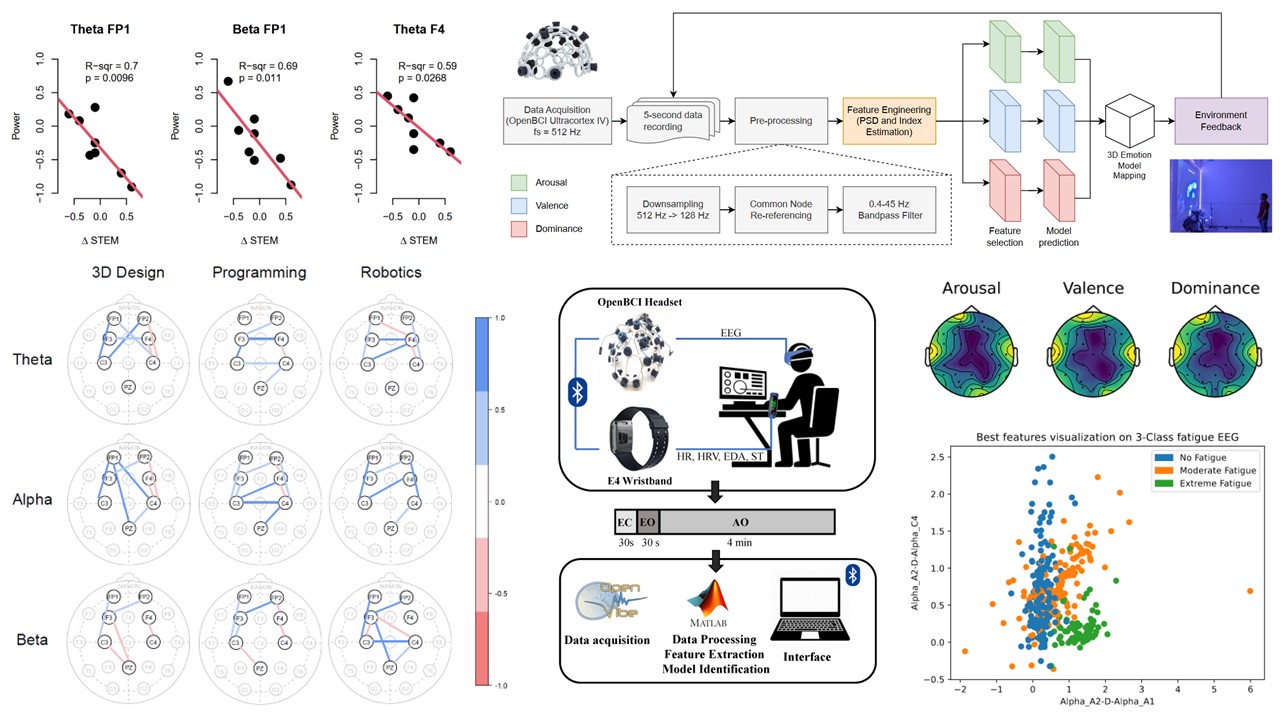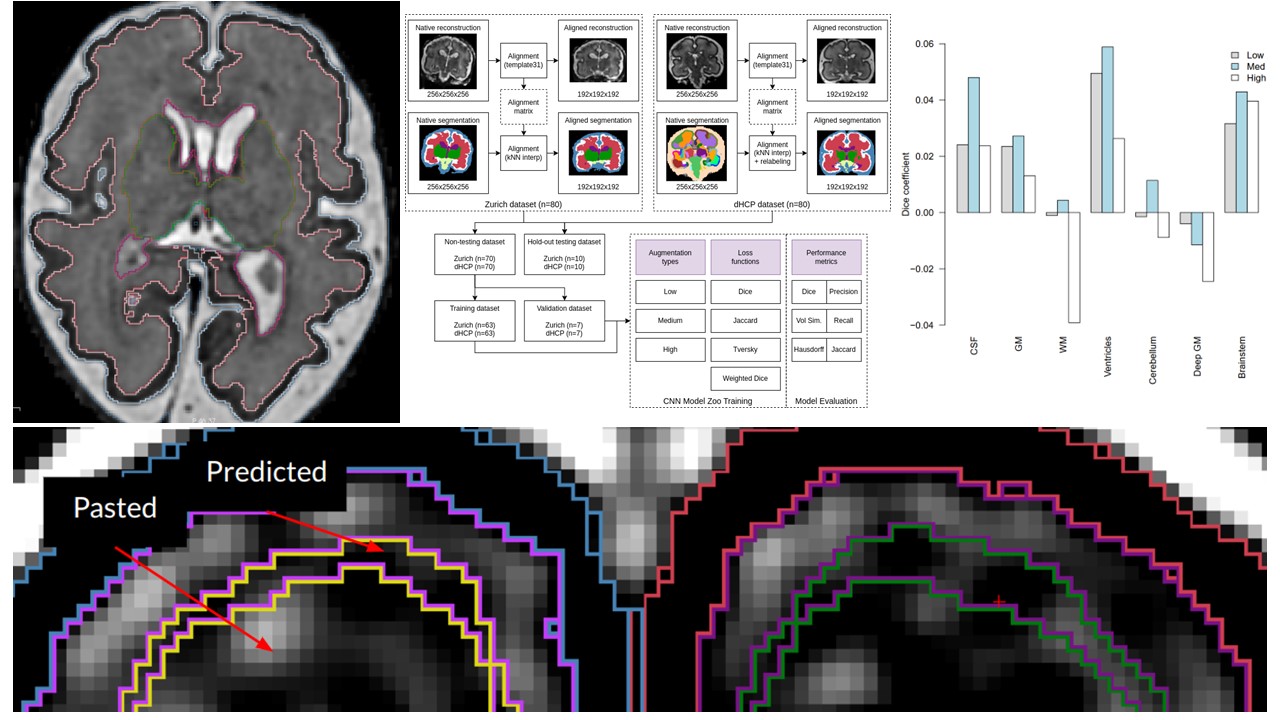Research Directions
(★ First author, ● Co-author)
Advancing Neuroeducation through Biometrics and ML
Traditional teaching methods often lack personalized approaches, but leveraging biometrics can revolutionize education by tailoring learning experiences to individual students' needs. By monitoring health-related features and students' behavior through wearables and biometric sensors, educators gain insights into cognitive states such as mental fatigue, engineering interest, and emotions. Through innovative computational neuroscience methods and parsimonious Machine Learning (ML) models, educators can extract biologically-relevant insights in real-time. This empowers them to provide timely interventions and personalized support to students, enhancing their overall learning experience and well-being.

- (2025) Closed-Loop Haptic Neurofeedback BCI for Real-Time Student Attention Regulation. 48th Nat. Cong. Biomed. Eng.
- (2025) Task Resolution Time Estimation through Cognitive Load: An EEG Study of Chess Players. 47th CogSci
- (2025) Neural Signatures of STEM Learning and Interest in Youth. Acta Psychol.
- (2024) Real-time EEG-based Emotion Recognition for Neurohumanities: Perspectives from PCA and Tree-based Algorithms. Front. Hum. Neurosci.
- (2021) Evaluation of a Fast Test Based on Biometric Signals to Assess Mental Fatigue at the Workplace—A Pilot Study. Int. J. Environ. Res. Public Health
- (2021) Detecting Change in Engineering Interest in Children through Machine Learning using Biometric Signals. ML-DT Edu. Innov. Workshop
- (2021) Real-time Biofeedback System for Interactive Learning using Wearables and IoT. 6th North American IEOM
- (under review) Brain–Body Dynamics in Dance Improvisation: Effects of Emotion and Immersion.
- (in prep) Are You Afraid? Neurophysiological and Autonomic Stress Responses to Fear in a Semi-Immersive Interactive Environment.
Developing Computational Models for Fetal Brain Imaging
In-utero fetal Magnetic Resonance Imaging (MRI) is a vital tool for studying brain development and detecting congenital disorders, aiding early interventions and clinical counseling. However, traditional segmentation methods are time-consuming and error-prone, challenged by low image quality and rapid morphological changes during gestation. To address these limitations, this research integrates deep learning-based segmentation, leveraging multi-view aggregation, hybrid loss functions, and data augmentation. The trained attention-gated UNet model predicts cortical and subcortical brain structures from MRI, enabling real-time pipelines. These findings advance robust models for fetal brain segmentation, enhancing early diagnosis and prenatal analysis.

- (2025) Regional Analysis of Error Patterns from Automatic Cortical Plate Segmentation in Fetal Brain MRI. 31st OHBM
- (2025) Attention-gated Convolutional Neural Network for Automated Segmentation of Fetal Subplate from MRI. 31st OHBM
- (2024) FALCONS: Fetal Automatic Landmark Computation and Optimization for Neuroimaging Segmentation. 27th MICCAI
- (under review) Typical Development of the Human Fetal Subplate: Regional Heterogeneity, Growth, and Asymmetry Assessed by in vivo T2-weighted MRI.
Enhancing Human Biomechanics with Deep Learning Models
Reliable force and motion estimation methods are essential for optimizing athletic performance, preventing injuries, and improving rehabilitation techniques. Traditional biomechanical analysis often relies on specialized equipment and expert interpretation, limiting accessibility and efficiency. To address these challenges, this research integrates Computer Vision (CV), wearable sensors, and deep learning to develop automated biomechanical assessment tools. The trained Recurrent Neural Network (RNN) model predicts joint accelerations and force distributions from video and sensor data, enabling real-time feedback. These advancements offer a scalable, data-driven approach for sports science, rehabilitation, and human movement analysis.
